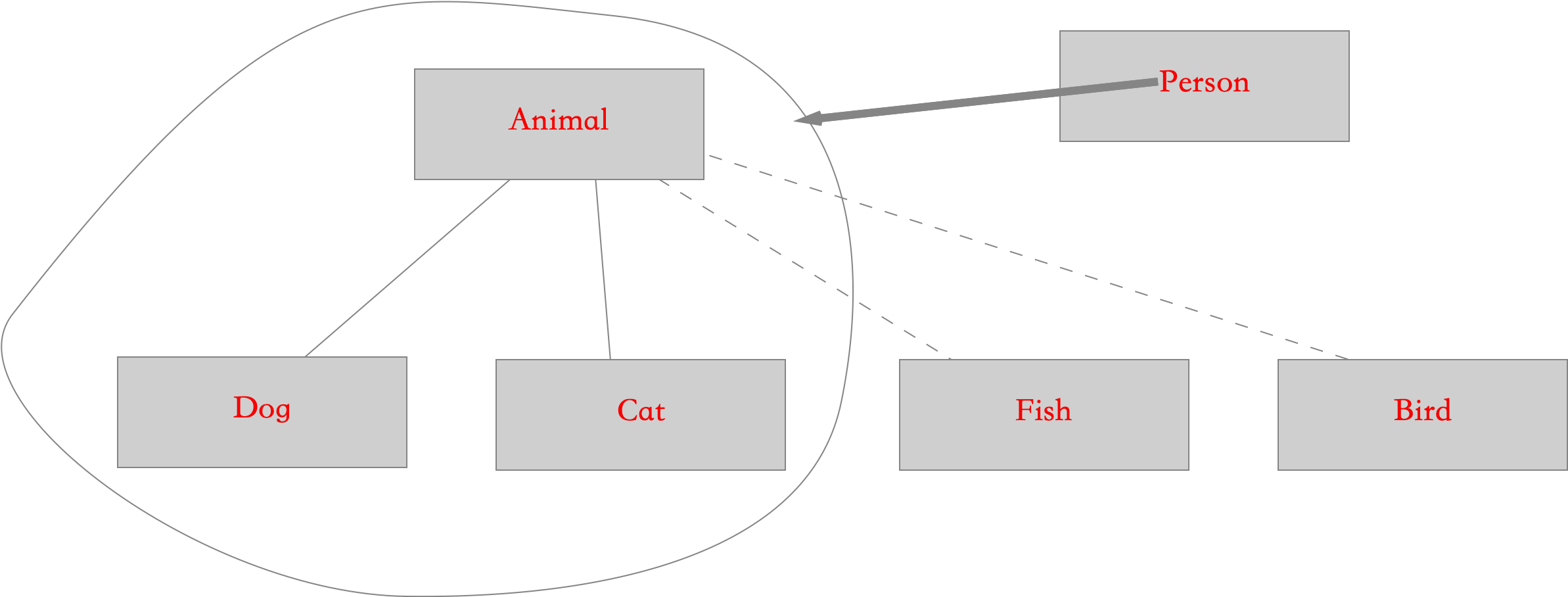Java面向对象之类、接口、多态
类
class Person {
// 实例属性
int age;
String name;
// 类属性
static int v = 1;
// 构造器
public Person() {}
// 构造器重载
public Person(int age, String name) {
this.age = age;
this.name = name;
}
// 实例方法
public void tell_age() {
System.out.println(this.age);
}
// 方法重载
public void tell_age(String s) {
System.out.println(this.age + " " + s);
}
// 类方法
public static void print_v() {
System.out.println(v);
}
}
// 类的继承
// 继承可以继承除了private的一切方法和属性
// Object是Java的顶级父类
class Man extends Person {
// 方法覆盖
@Override
public void tell_age() {
super.tell_age(); // 执行父类的此方法
System.out.print("Man eat...");
}
}
接口
指interface,类似于swift的protocal
interface中的变量都是默认public static final修饰的
interface中的方法都是默认public abstract修饰的
注意点:
这些修饰词可以省略一个,也可以省略多个(甚至都省略),但是不能用其他修饰词修饰.
不写public 不是默认的 default;写default会报错
变量:
public static final int MAX_LENGTH = 1000;
final int MAX_LENGTH = 1000;
static int MAX_LENGTH = 1000;
public int MAX_LENGTH = 1000;
int MAX_LENGTH = 1000;
方法:
public abstract void method();
public void method();
abstract void method();
void method();
interface Animal {
public void eat();
public void sleep();
public void play();
}
interface Fish extends Animal {
public void swim();
}
class AFish implements Fish {
@Override
public void swim() {
}
@Override
public void sleep() {
}
@Override
public void play() {
}
@Override
public void eat() {
}
}
// 当然,一个类也可以实现多个interface 彼此之间用逗号隔开:
// class ClassA implements interfaceA, interfaceB, interfaceC {
//
// }
多态
public class Demo {
public static void main(String[] args) {
Cat c = new Cat();
// Java 多态 一个方法有多种状态
Animal cat = new Cat();
Animal dog = new Dog();
cat.eat(); // cat eat ...
cat.sleep(); // cat sleep...
dog.eat(); // dog eat ...
dog.sleep(); // dog sleep...
Person p = new Person();
p.care(cat);
p.care(dog);
}
}
interface Animal {
public void eat();
public void sleep();
}
class Cat implements Animal {
@Override
public void eat() {
System.out.println("cat eat...");
}
@Override
public void sleep() {
System.out.println("cat sleep...");
}
}
class Dog implements Animal {
@Override
public void eat() {
System.out.println("dog eat...");
}
@Override
public void sleep() {
System.out.println("dog sleep...");
}
}
class Person {
public void care(Animal a) {
a.sleep();
a.eat();
}
}
多态使程序更加具有扩展性:向上类型转化、方法的动态绑定
